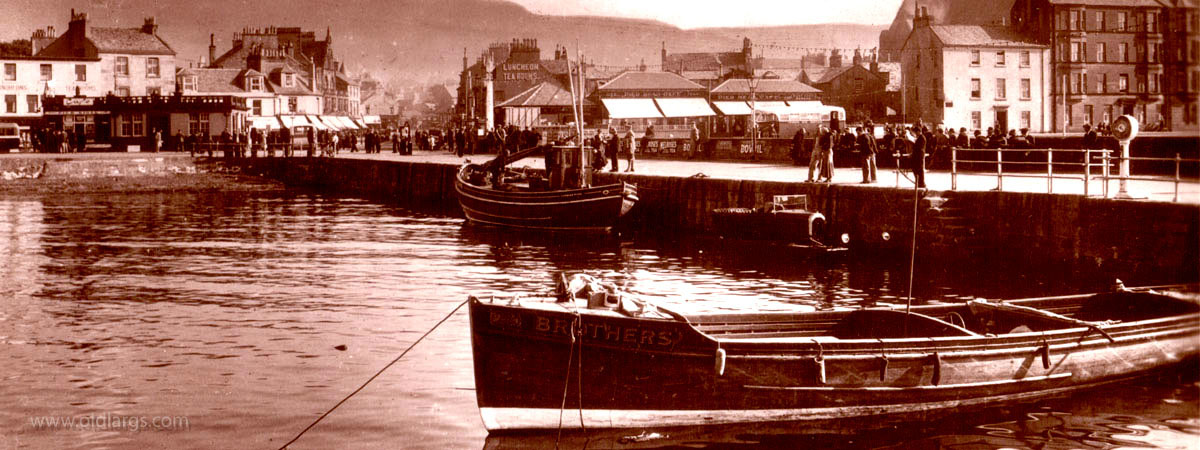
A walk around Largs Pier.
Welcome to our walk around Largs pier. First we will concentrate on the the history of the Pier itself. Next we will explore the North and South end of the pier and its surrounding buildings including the Old Moorings building and the building where the Costa, Co-op and JD Wetherspoons are located today. We finish with a feature on all the old ships which have been have been regular visitors to the pier over the years. So lets get started with the history of the Largs pier.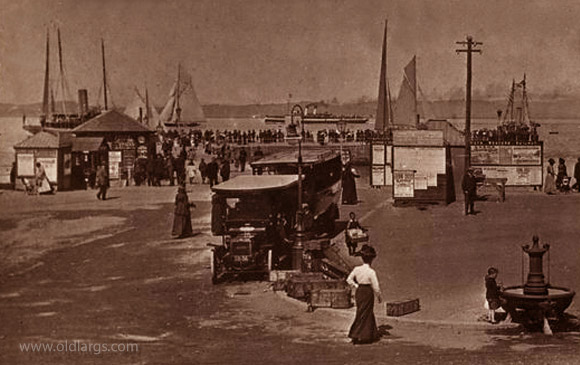
Before the Largs pier was built there had always been much inconvenience and risk in coming ashore due to the exposed area of Largs.
Cattle coming to local fairs would be unloaded directly on to the shingle at the mouth of the Gogo burn. Early steamers would transfer passengers into smaller boats to get ashore.
By 1816 seventeen steamboats were plying the Clyde among them McIntyre's 1914 PS Albion and Captain Kay's 1816 PS Glasgow which were both regular visitors to Largs. The Albion survived on the Glasgow to Largs route until 1835. She was apparently so slow that it was reported that boys ran races against her on the Skelmorlie shore.
On 10th January 1833 the foundation stone of the new Largs pier was laid down by William Miller. It was completed and officially opened in 1834. The cost of the pier was £4275 and was built by the Largs Harbour Company Ltd.The pier was more a stone quay than a pier. When more piers sprung up along the Clyde these would be made of wood. So for years Largs pier was treated with great respect by by captains who berthed there. Its stone construction was unforgiving as wooden piers give and spring back. The Largs pier was known to redesign and reshape many a steamers in the years to come.
The first ship to use the new Largs pier was the PS Glasgow which was built in 1813 by John Wood of Port Glasgow. The same yard which built the first commercial Clyde paddle steamer, the famous Comet. As the PS Glasgow left Greenock it was to become the first Clyde steamer sailing to the new Largs pier.
Like all steamers of this time it was a wooden construction with a large tall funnel which would double up as a mast if any engine issues occurred. It would be another 2 decades before the first iron built vessels appeared on the Clyde.
In the decade following the opening of the pier we find 11 new Clyde steamships being built for trading from Glasgow. Regular visitors to the new Largs pier included the largs (1822), Countess of Glasgow (1825), Fairy Queen (1831) ,Victor (1836), Warrior (1839), Hero (1832), Lady Brisbane (1842) and Lady Kelburn.(1843)
The Victor, Hero and Warrior were owned by Duncan McKellar who had a virtual monopoly on the Glasgow to Largs and Millport trade routes from the 1830s to the 1860s. Former soldier McKellar was a veteran of Waterloo and named many of his ships in recognition of his wartime exploits.
The Ayrshire coast route was soon to be regarded as one of the more lucrative Clyde routes due to the commercial potential so it was not long before a fleet of small wooden steamers, owned by various owners, were soon to be competing fiercely with many visiting Largs.
Other vessels working between Largs and Millport were the Invincible (1844), Countess of Eglinton (1844) which was blown from her moorings and wrecked on the Eilans, Millport Bay. The Mars (1845), Vesta (1846),Star (1849), Venus (1852), Jupiter (1856),Spunkie (1857), Kelpie (1857), Juno (1860) and the Meg Merrilies (1866).The Largs Pier 1900s.
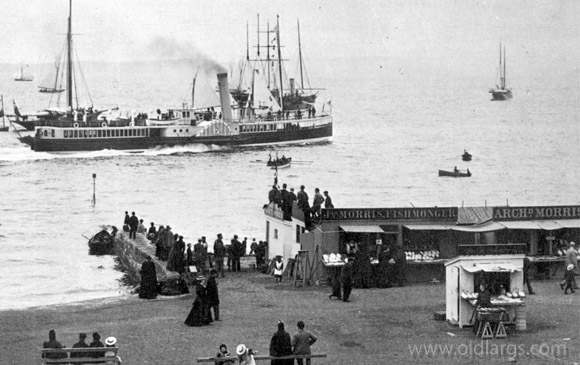
Fish stalls at the pier.
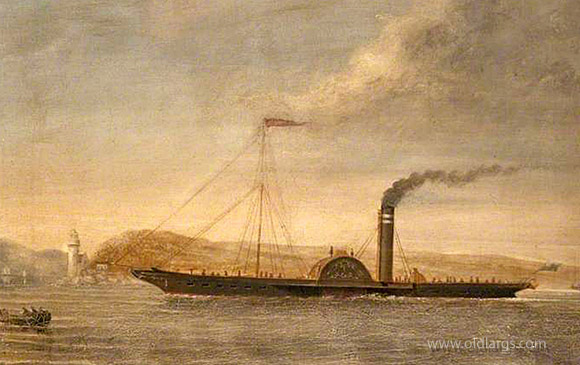
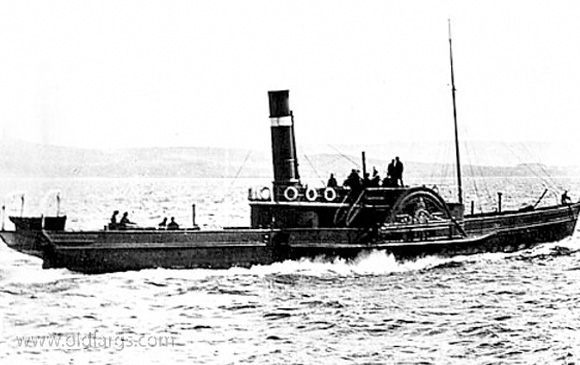
The Mars. Wrecked of the Gogo Burn in 1855.
The steamer Lady Brisbane. The first steamer to make the Glasgow to Largs return trip in one day.
Without the powers to operate their own steamer services, the railway companies formed the Wemyss Bay Steamboat Company and ordered three new steamers including the PS Largs (1865) to compete directly on the Largs and Millport station against Donald McKellar’s now ageing Largs and Millport steamer fleet which had dominated the route from 1832 onwards
The arrival in 1842 of the Iron steamer Lady Brisbane and her sister ship Lady Kelburne raised standards by making it possible for the first time to travel from Glasgow to Largs and back in the same day. This was also a new threat to the McKellar fleet and two seasons of cut throat competitions commenced. McKellar responded by bringing the fast PS Invincible on the route. Eventually the two fleets were merged and these vessels were replaced by the newer Jupiter (1856) anf Juno (1860).
In 1855 Largs witnessed its first sea drama with the PS Mars going aground at the mouth of the Gogo Burn. Her passengers had to be brought ashore in carts. It was the morning of April 10 1855 that the Mars, built 10 years previously for the McKellar’s Largs and Millport fleet, left in very stormy weather, and upon approaching Largs her paddle-shaft snapped. Sails were hoisted but the gale was so high that they blew away, and she was driven ashore at the Gogo Burn.Everyone on board the PS Mars managed to leave the vessel, and within a couple of minutes, the Mars had gone completely to pieces and scarcely anything of her was to be seen. The wrecked vessel was later put up for auction but did not receive any buyers as most of the wreck had been scattered several miles around the coast.
By 1865 the next owner to cater largely for Largs were Gillies and Campbell. This seen the steamers Lancelot, Largs and Argyle visit Largs. The exposed position of the new Largs pier was well recognised and it was with little surprise that gales in 1882 and 1884 substantially wrecked the pier structure. The 1882 gale damaged the whole of a wooden corner of the pier which was added in 1870.By the 1890s the new railway ship owners had merged and married up the rail and ship timetables and were in competition in Largs as elsewhere. The rivalry between the Caledonian and Glasgow & South Western became so intense that the latter company bought over the pier to thwart the opposition.
It was intended that the Caledonian and South Western were to extend their railway line from Kilmacolm direct to Largs and erect a larger harbour.However numerous objections from locals caused the project to be turned down in the House of Lords. This would have involved a railway line approaching a new station at the pier from the sea front at Broomfield’s.The arrival of the railway to Largs in 1885 brought wealthy businessmen to Largs who built many fine homes. Some had large steam and racing yachts. These would often take part in racing competitions just off Largs.
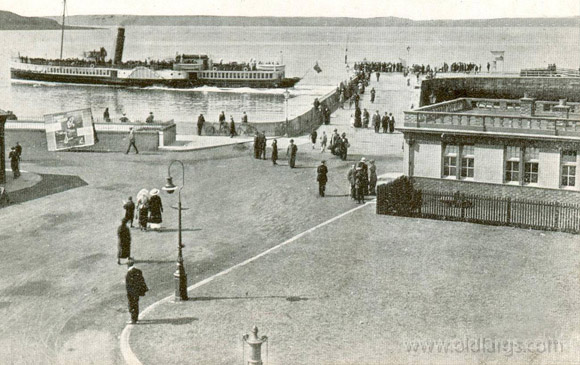
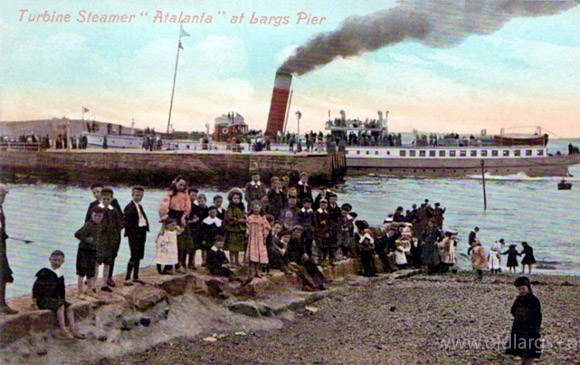
The Caledonian and Glasgow South Western ticket office
The TS Atalanta at Largs
Of course it was not just the Clyde steamers who were regular visited Largs. Between 1869 and 1900 a total of 147 different types of vessels were registered to the Largs pier with 231 operating in the area. These included many local fishing boats and the fishermen would sell their catch from many small huts located along the pier and prom. So great was the number of vessels coming to Largs that a signal box was built on the pier to control the queuing ships waiting to
get on to the pier.
In 1900 a winter storm cause more pier damage The earth surface was torn up, planking damaged while a waiting room collapsed.
By 1902 13 different steamers were regular visitors at the pier. These included the Jupiter (1856), Juno, Ivanhoe (1880) ,Waverley, Stathmore, Benmore (1876) and Meg Merrilies (1883). In 1903 the pier was resurfaced and a few feet was added to its length along with new vertical piles.
In 1923 the pier came under the control of LMS (London Midland & Scottish Railway) after the amalgamation of various private railway companies.The amalgamation of Britain's various private railways into four main groups took place in 1923 and included merging the operations of the two companies (Caledonian and Glasgow & South Western) which had competed fiercely from piers on the Ayrshire and Renfrewshire coast.
The vessels of the G&SWR had been directly railway-owned and were transferred directly to the new LMS. The parliamentary powers granted to the G&SWR were less extensive than those to the Caledonian Steam Packet Company which had operated as a subsidiary of it's railway parent, yet after 1923, the LMS and CSP fleets remained separately registered. This situation, which did not allow LMS boats to visit certain parts of the Firth, especially the longer-haul cruise destinations, remained unchanged until the LMS boats were re-registered with CSP shortly before the Second World War. The LMS was absorbed into the nationalised British Railways in 1948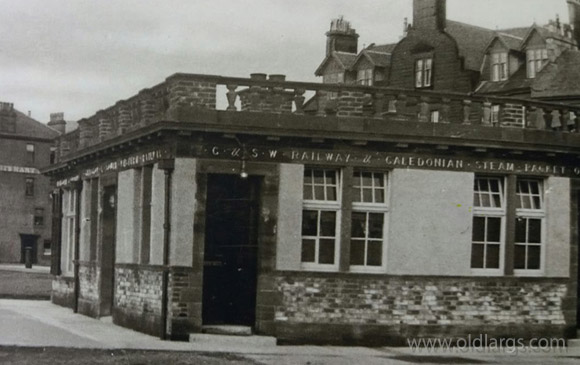
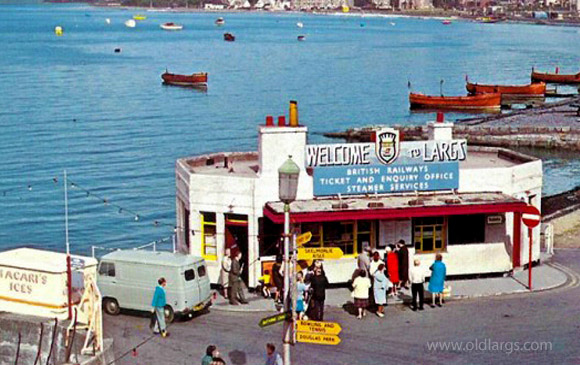
The Caledonian and Glasgow South Western Ticket Office.
The Old British Railways Office located where the Cumbrae slip is today
On the night of 11th and 12th February 1931 the Pier received one of its most unusual visitors. The Balgowan was among many idle ships lying in Rothesay Bay. At 2:30 during a north westerly gale her anchor chain broke and there was little her watchman could do but to halt her drifting.
The three men on board were helpless to steer a safe course, and the steamer drifted at the mercy of the gale.Chief officer Mr J.L Nicol said: “The manner in which the Balgowan drifted alongside Largs Pier without human aid was a most remarkable happening. I thought nothing could prevent us from running aground on the Cumbrae or Ayrshire coast, and for a time, it was probable that we would strike the north end of Cumbrae, but when we got clear of the point it seemed we must ground on the Ayrshire coast.”“So it was with the greatest relief that I saw us coming alongside the Largs Pier. We took the pier like a Clyde steamer, coming in broadside, and not the slightest damage was done to the pier or the ship.”
So after narrowly missing the North end of Cumbrae she came to rest alongside Largs pier at 1.30am with such amazing accuracy that would have been the envy of many a Clyde steamer skipper. The Balgowan had a gross tonnage of 6599 tons, and was launched in 1917 from the yard of Messrs Doxford and Son, Sunderland. The Waverley we know today by comparison is 693 tons. The Balgowan is regarded now as the largest vessel to visit Largs pier.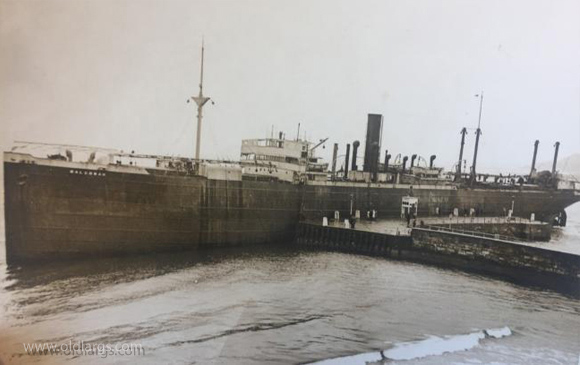
The Balgowan at Largs pier
In 1917 the first Sunday sailing from the pier occurred with the new style turbines vessels Glen Sannox and Duchess of Argyll. For many years after WW1 the only passenger ships to visit Largs were the Marchioness of Breadalbane and the Glen Rosa. However from 1932 wee see the arrival of the Jupiter, Atalanta, Queen Express and Duchess of Fife.
In 1936 seen the arrival of the small motor vessel MV Wee Cumbrae with a dedicated regular ferry service between Largs and Millport. She could take 60 passenger and to begin with had no accommodation for the passengers on deck until 1936 when a rail and seats were added.
During the WW2 the Marchioness of Graham (1936) took the bulk of the Clyde steamer runs to Largs. It appeared that the rocks around the Cumbrae foreshore had an unfortunate attraction for the Marchioness. In April 1946 she went ashore at a spot called Wishing Well but was re floated an hour later. In Feb 1953 she was approaching the Keppel pier and ran aground 50 yards from shore, again she was re floated and escaped any serious damage.
After the war the Duchess of Fife was the main Wemyss Bay, Largs Millport service run.In 1953 the Wee Cumbrae was replaced by similar sized vessels the MV Ashton (1938) and MV Leven (1938) on the Largs to Millport Pier run. These small vessels continued until 1966 by which time the MV Keppel has arrived on the same route.
The MV Keppel (1961) started off life as the MV Rose on the Largs and Millport run. Within weeks she was renamed to the Keppel and faithfully carried out the Millport run for nearly 20 years. She became the only vessel in the Calmac fleet to berth overnight on Millports pier. By 1977 she was on other duties on the Clyde but was brought back to Largs in 1980 to convey Millport school children to Largs. Shortly after she ran aground causing damaged and was repaired to start seasonal afternoon cruises around Cumbrae. By 1986 her service was no longer required when the new ferry’s Loch Striven and Loch Linnhe started the Largs route on 4th July 1986. The Keppel was still a regular visitor to Largs until the early 1990s as a summer cruise vessel.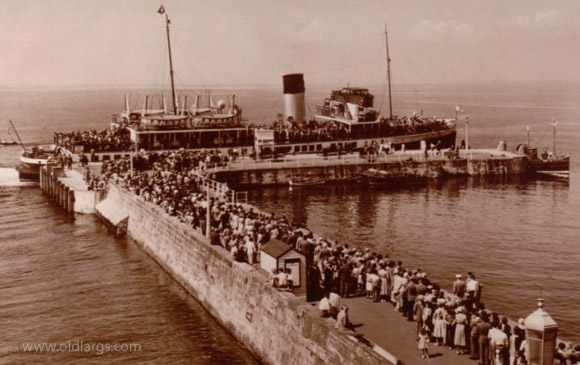
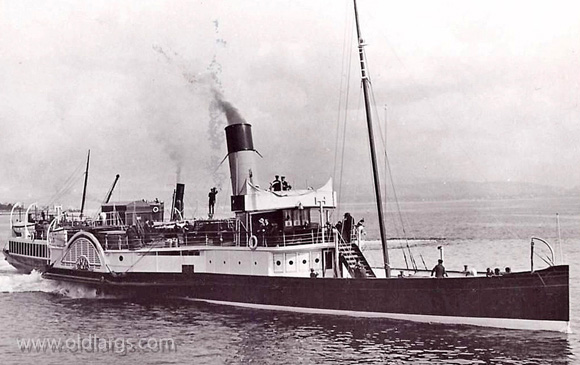
Passengers lining up to board the Marchioness of Graham
The Marchioness of Breadalbane
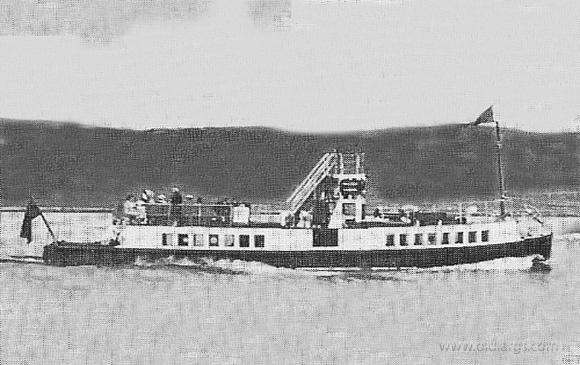
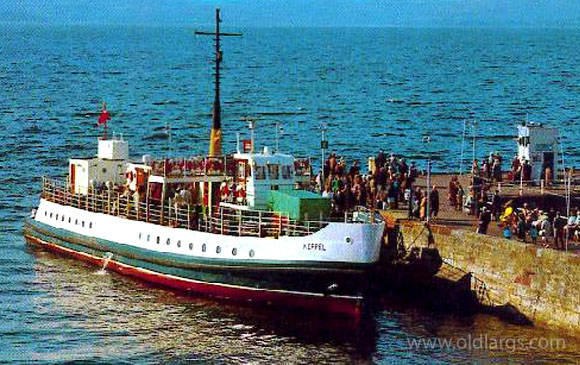
MV Wee Cumbrae
The Keppel at Largs pier
With the arrival of the pier and regular steamer visits the pier head soon became a centre for transport. In the mid 1900s there was a basic terminus for the few bus services which operated from the town, which was gaining popularity as a good destinations for a day out. The North part of the pier head had a very Spartan appearance with few buildings.
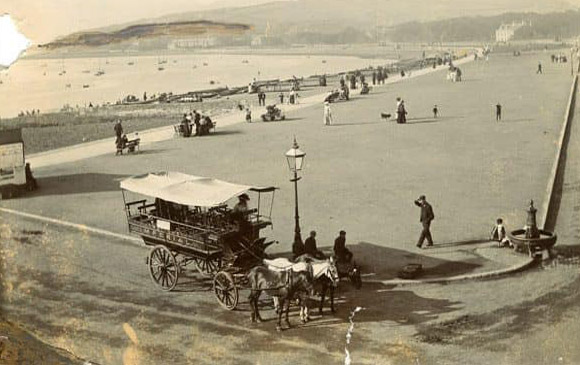
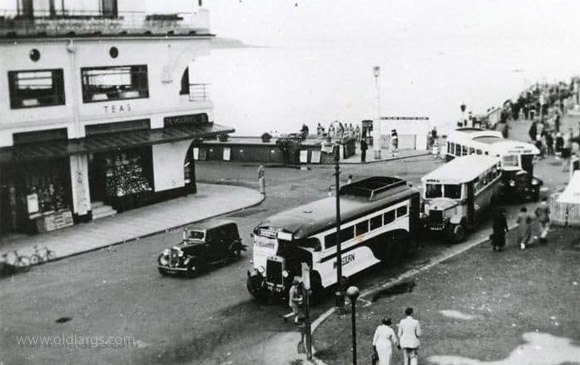
The pier head in the early 1900s. No Weatherspoons in those days.
A Western SMT owned Leyland Tiger TS7T type bus at Largs. Late 1930s.
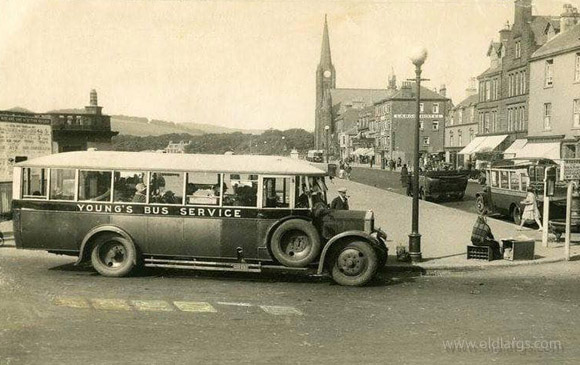
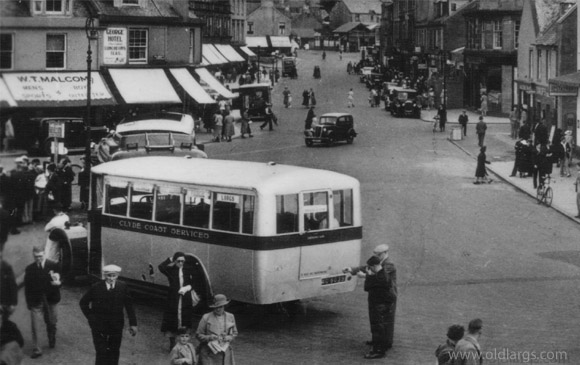
A Young's bus ready to depart. Young's Buses with their attractive yellow (later Orange) livery started operating from Largs in the 1920s.
The popular Queen Mary at Largs Pier
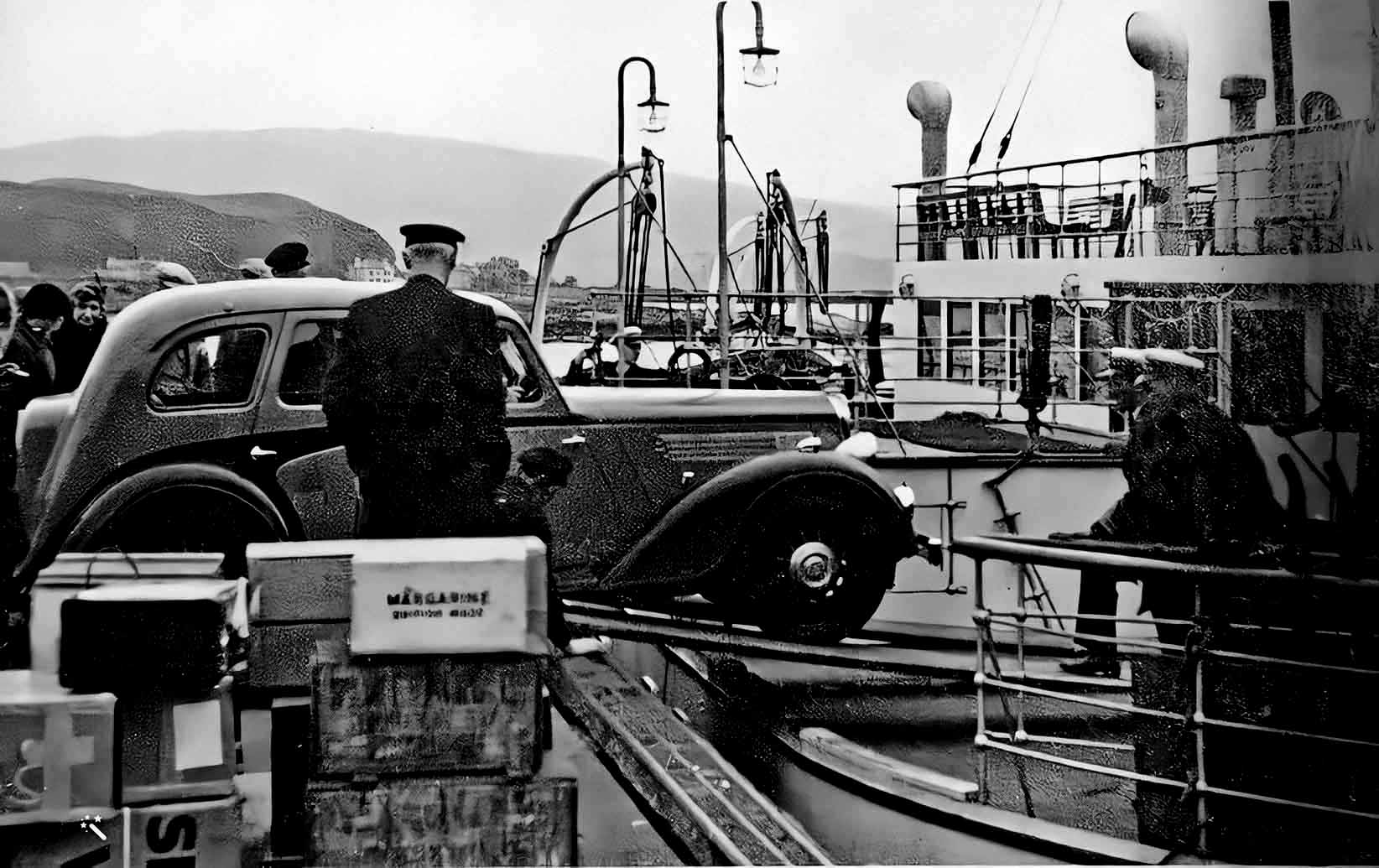
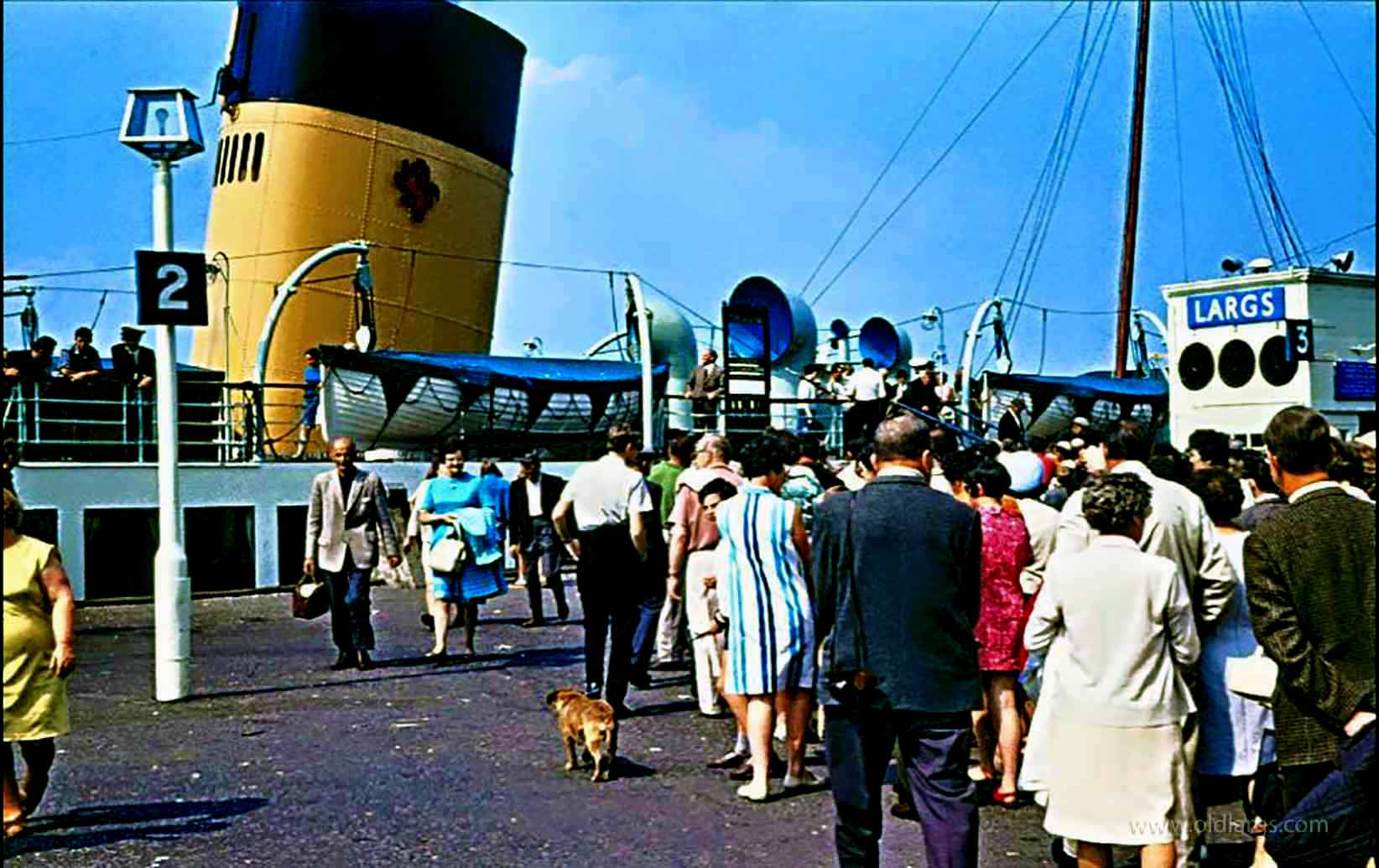
A car bound for Millport getting loaded onto a ferry at Largs Pier.
Queen Mary 2 at Largs.
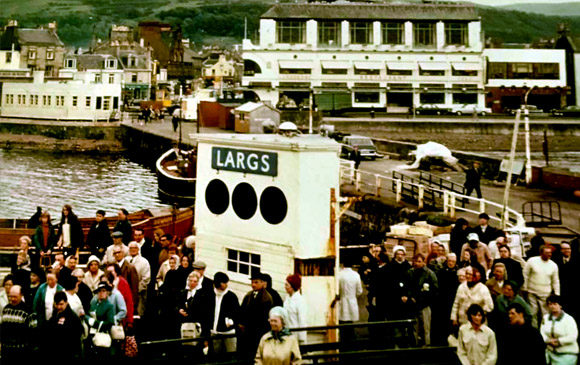
The image above and to the left shows the old Largs pier signal stations. Now long gone. These boxes were a feature on all Clyde piers well into 60s. In the 1870s there was so many steamers competing for custom, racing to piers became very dangerous and collisions were numerous. To fix this the Navigation Act of 1887 gave piermasters and not captains the power to decide which steamer had precedence.
Within 2 years these stations appeared at all Clyde piers. They had two ends each facing the opposite side of the water. On each side were three black disks which were normally black. The inshore disk was for the steamer nearest to the shore, the middle disk for the middle steamer, and the outer disk for the furthest steamer from the shore. The piermaster changed the disc to white for the steamer that had the right to berth first and the other steamers had to give way. Red and white lanterns were used at night.
The system appeared to work well and captains who ignored a signal were liable to prosecution. The only remaining signal station left on the Clyde is on Kilcreggan Pier. Kilcreggan is just opposite Gourock on the Argyll coast just next to the entrance to Loch Long. The Waverley is a regular visitor to Kilcreggan, when it sails to Carrick Castle on Long Goil. Have a look out for it if you go on that cruise. It is a relic of an old age of rivalry on the Clyde long since gone.